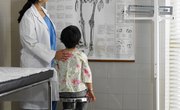A nursing case study is an in-depth examination of a situation that a nurse encounters in her daily practice. The case study offers a safe way for the nurse to apply theoretical and actual knowledge to an actual or potential patient scenario. She can employ her decision-making skills, use critical thinking to analyze the situation, and develop cognitive reasoning abilities without harming a patient. Nursing case studies are commonly used in undergraduate nursing programs, graduate schools offering a master’s of science degree in nursing (MSN), and orientation programs for new graduate nurses. They may be presented in written form, online, or live in a classroom setting.
Choose a topic. According to Sigma Theta Tau International, the topic should be focused, based in reality, and relevant. It should demonstrate current best practices that are supported by nursing research. The nurse may choose to discuss a situation from his past experience, or delve into something in his current job.
Write objectives. There should be at least three learning objectives, or outcomes, that identify what the learner will gain from completing the case study. Learning objectives are written as clear, measurable behaviors, such as “Identify five risk factors for falls in older adults.”
Write an introduction. This should be a one- or two-paragraph overview that describes the patient, the situation, and circumstances relevant to that situation. The introduction can also include a little about the patient’s history leading up to the situation.
Integrate more history and background. The next 1 to 2 paragraphs provide the learner with in-depth information to analyze the situation, such as lab values, diagnostic study results, findings from the nurse’s assessment of the patient, and a more detailed patient history.
Formulate questions. Nursing case studies are interactive scenarios that stimulate analysis and critical thinking. The questions typically require the learner to use the nursing process (assessment, nursing diagnosis, planning, intervention, and evaluation) and to anticipate what will happen next in the situation.
Give feedback. According to Sigma Theta Tau, the nursing case study provides the learner with two types of feedback: informational and reinforcing. Informational feedback lets the learner know if she has answered questions correctly, and gives her an idea of how she is progressing through the patient scenario. Reinforcing feedback gives the learner additional information about her responses to the questions. If she answers the question correctly, she’ll be given the rationale behind her right answer. If she gives the wrong answer, reinforcing feedback lets her know why that answer is wrong.
Provide references. It’s important to point the learner toward additional learning opportunities in print or on the web.
Related Articles
References
Resources
Writer Bio
Sandy Keefe, M.S.N., R.N., has been a freelance writer for over five years. Her articles have appeared in numerous health-related magazines, including "Advance for Nurses" and "Advance for Long-Term Care Management." She has written short stories in anthologies such as "A Cup of Comfort for Parents of Children with Special Needs."










